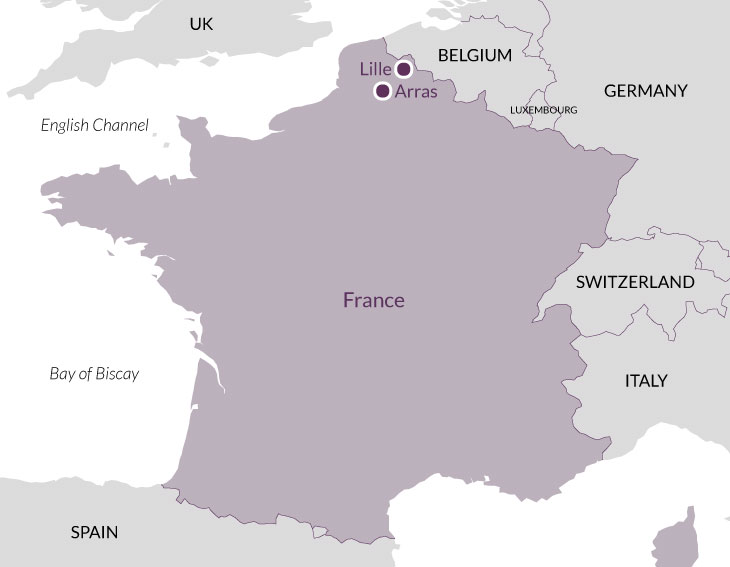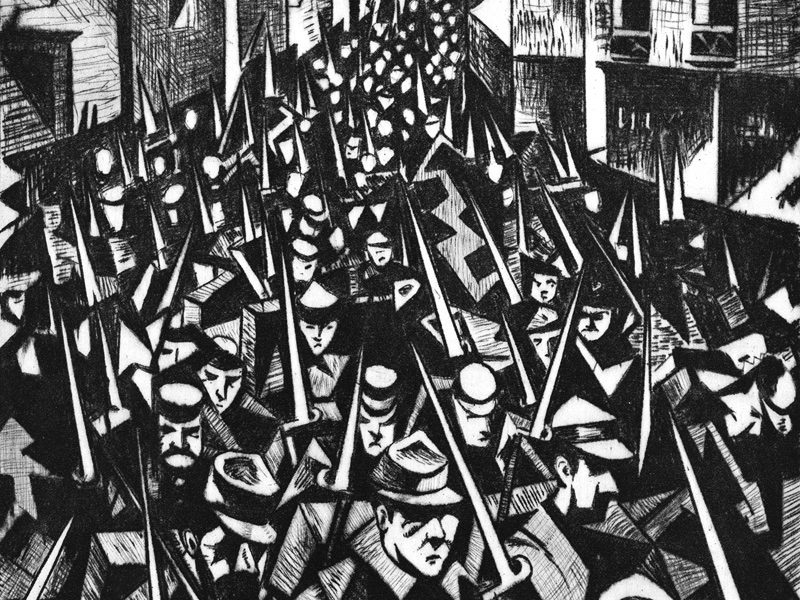Overview
Listed in the Telegraph's 10 great First World War battlefield tours
The First World War was the first and only conflict in modern British history when nearly all of the British army was fighting the main enemy (Germany) in the main theatre (the Western Front) for the whole of the war. Unlike the armies of France and Germany the pre-war British army was composed of long service professionals – compulsory military service on the European pattern would have been regarded as an unacceptable infringement of the rights of a free born Briton – but it was very small.
Having made the decision to declare war in support of France on land as well as at sea, the British had to create a mass army, which grew from just four infantry divisions and a cavalry division in 1914 to seventy divisions in 1918, from 100,000 men to two and a half million, initially from volunteers and then, from the middle of 1916, from conscripts. As the junior partner on land it was not for British politicians or British generals to dictate the course of the war, and until at least the spring of 1917 it was the French who directed operations on the Western Front.
Thus, the rationale of much of what the British army did may be difficult to understand when viewed solely through Anglo-centric eyes, but makes complete sense when looked at in the context of the war as a whole. It is only possible to understand the Somme when one comprehends what was happening at Verdun 120 miles to the south, and Haig’s insistence on continuing the Third Battle of Ypres (Passchendaele) is fully justified only when the state of the French armies is taken into consideration, with the absolute necessity of drawing the Germans onto the British front and away from the French.
There is probably more myth and legend surrounding the Great War than any other aspect of Britain’s long military history: an unnecessary war (so why was pre-war Germany furiously building a blue-water navy?); bungling generals sitting safely in châteaux far behind the lines (so why were so many killed in action?); the loss of a generation (but 74% of all the men who went over the top in the Battle of the Somme came out without a scratch) and there are many more. But for all that, the war cost Britain 700,000 dead.
This tour visits the battlefields and examines not only what happened but why; it will consider the performance of generals and privates, British (and the empire forces of India, Canada, Australia, New Zealand and South Africa), French, American and German, and will ask whether there was another way, or was a series of long, slogging, bloody battles of attrition the only way to prevent a German Europe?
Day 1
Lille, Loos. Take the Eurostar at c. 11.00am from London St Pancras to Lille (light lunch on board). The Battle of Loos in September 1915 involved the largest number of British troops yet deployed in this war. It saw the first use of poison gas by the British, with mixed results, and amongst the British dead were three major generals commanding divisions. Some free time before the first evening lecture. First of two nights in Lille.
Day 2
Ypres. Full day visiting the Ypres Salient or ‘Wipers’ to the British who held it for most of the war, and to examine the battles of 1914 and 1915 when the Germans were trying to break through to the Channel Ports. In the evening we attend the Last Post ceremony at the Menin Gate, where the British dead have been regularly remembered ever since 1928. Overnight Lille.
Day 3
Ypres, Neuve Chapelle. The second day in Ypres examines the highly successful capture of Messines Ridge by British, Australian and New Zealand troops in 1917, followed by the Third Battle of Ypres, the results of which are still controversial. Then travel south, visiting Neuve Chapelle, where in March 1915 the Indians and Gurkhas were the first to break the German line. First of two nights in Arras.
Day 4
The Somme. A day spent studying the opening of the Somme offensive on 1st July 1916, considered one of the most traumatic days in modern British history. Overnight Arras.
Day 5
The Somme, Amiens, Vimy Ridge. Continue the tour of the Somme battlefields, this time looking at the later operations and the end of the battle in November 1916. Visit the scene of the August 1918 Battle of Amiens, the beginning of the final Allied offensive which three months later brought the war to an end. On the return to Lille, pause at Vimy Ridge, scene of the significant Canadian advance of 1917. The Eurostar arrives London St Pancras at c. 6.00pm.
Price
£1,790. This includes: return travel by Eurostar between London and Lille (standard premier); private coach travel for transfers and excursions; accommodation as described below; breakfasts, 4 lunches, 4 dinners with wine, water, coffee; all admissions; all tips; all taxes; the services of the lecturer. Single supplement £210 (double room for single occupancy). Price without Eurostar £1,650.
Accommodation
Hôtel Hermitage Gantois, Lille: a 5-star hotel in a converted 15th-century hospice. Décor is traditional with a modern twist. Hôtel de l’Univers, Arras: a traditional 3-star hotel in Arras, installed in a 16th-century building. Rooms vary in size and decoration. There is a good restaurant.
How strenuous?
There is a quite a lot of walking and standing for long periods of time, often over uneven ground and in open fields. Fitness is essential. Average distance by coach per day: 78 miles.
Are you fit enough to join the tour?
Train travel
We choose to travel by train because it is less harmful to the environment than travelling by plane, and avoids the stress and chaos of airports. However, trains can be crowded and there is often little room for luggage, even on the Eurostar. You will need to be able to carry (wheel) your own luggage on and off the train and within stations.
Group size
Between 10 and 22 participants.
Travel advice
Before booking, please refer to the FCDO website to ensure you are happy with the travel advice for the destination(s) you are visiting.

'We had high expectations and they were exceeded, thank you.'
'The itinerary picked out the parts that pulled the whole story together and was excellently planned and executed.'
'The lecturer was quite simply outstanding.'
